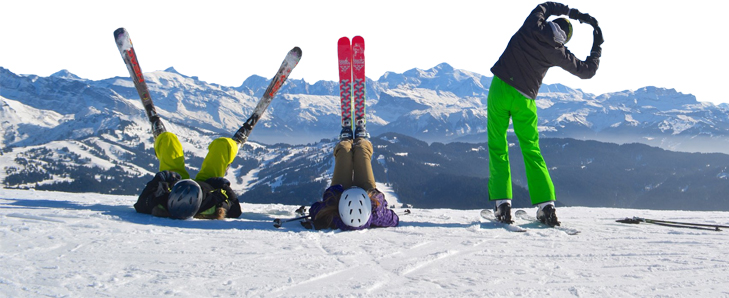Snow Cannons: Friend or Foe?
POSTED:
POSTED:
_w=672_h=445_pjpg.jpg?v=202403110927)
Every day, stories circulate about the changing environment, highlighting the impact of our never-ending pursuit of comfort and excitement. Skiing, a beloved winter sport, is not immune to these discussions. At VIP SKI, we constantly navigate the balance between environmental responsibility and providing a memorable ski experience for our guests.
_w=870_h=560.png?v=202403110927)
One irony we face is the environmental regulations requiring us to insulate chalets meticulously, only to cut holes in window frames for aeration and install chimneys that compromise this insulation. In Avoriaz, we install heat pumps to meet green regulations, but they become inefficient below minus four degrees, forcing us to switch them off for half the year.
Another conflict is the unfortunate feedback loop that resorts at lower altitudes have been sucked into to protect their communities. Less snow at lower altitudes means more snow cannons, leading to increased emissions and even less natural snowfall. In some resorts, snow cannons consume more electricity than the lifts themselves. Covering a football pitch-sized space in a foot of snow uses the same resources as 7,500 washing machine cycles! Snow cannons also confuse natural drainage patterns putting huge amounts of water where it wouldn’t normally be and disturbing local habitats.
_w=870_h=560.png?v=202403110927)
Lower altitude resorts face significant challenges due to reduced snowfall, leading to a reliance on snow cannons. This technology, while energy-intensive, is vital for maintaining the ski industry and the communities that depend on it. According to industry analyst Laurent Vanat, more than 60 per cent of the world’s ski slopes are currently supplemented by snowmaking machines.
_w=870_h=560.png?v=202403110927)
Snow cannons have come a long way since their inception, with significant technological advancements making them more efficient and environmentally friendly. Did you know that artificial snow is more compact and durable than natural snow and 10 cm of snow from snow cannons is the equivalent of 60 cm of natural snow?
Here are some ways in which snow cannons are evolving:
1. Intelligent Weather Monitoring
Modern snow cannons are equipped with advanced weather monitoring systems that provide real-time data on temperature, humidity and wind conditions. This allows for precise snow production, optimising the use of water and energy. By adjusting operations based on current weather conditions, snow cannons can produce the highest quality snow with the least number of resources.
2. Energy-Efficient Compressors
Recent models of snow cannons use energy-efficient compressors that require less power to generate the same amount of snow. These compressors are designed to operate more quietly and efficiently, reducing both energy consumption and noise pollution.
3. Automated Systems
Automation is a key advancement in snow cannon technology. Automated snowmaking systems can start and stop snow production based on pre-set parameters and real-time environmental data. This reduces the need for manual intervention and ensures that snow is produced only when conditions are optimal, thereby conserving resources.
4. Water Conservation Techniques
New snow cannons incorporate water recycling technologies and more precise nozzles that create smaller snow particles. This not only improves the quality of the snow but also reduces water usage. Some systems even reclaim water from melting snow, feeding it back into the snowmaking process.
5. Hybrid Energy Sources
To reduce reliance on traditional power sources, some snow cannons are now being designed to operate on hybrid energy systems, including renewable energy sources like solar or wind power. This integration helps in cutting down greenhouse gas emissions associated with snow production.
6. Temperature-Independent Snowmaking
One of the most significant advancements is the development of temperature-independent snowmaking systems. These systems can produce snow at temperatures above freezing, using a process that involves cooling water to sub-freezing temperatures before spraying it. This technology extends the snowmaking season and ensures that resorts can maintain snow cover even during warmer periods.
7. Improved Mobility and Placement
Modern snow cannons are designed to be more mobile and easier to deploy across the slopes. This allows resorts to strategically place snow cannons where they are most needed, ensuring more uniform snow coverage and reducing wasted resources.
Yet through all the confusion, beauty can emerge in the form of art.
_w=870_h=560_pjpg.jpg?v=202403110927)
Esteemed artist and long-term guest Julie Hammonds stayed with us in Val d’Isère in December and was struck by the conflict between the glorious mountain wilderness photo that wallpapers the dining room in Aspen House Loft 3 and the ugly modern infrastructure that sustains our skiing pleasure today.
It inspired her to paint this stunning oil painting of the view from the Folie Douce, itself a noisy collision of hedonism and nature (!), entitled “Snow Cannons: Friend or Foe”. This artwork encapsulates the ongoing debate and highlights the essential role snow cannons play in our skiing pleasure. This painting has been part of an exhibition reflecting contemporary environmental issues and we were thrilled to hear that Julie has just been awarded the Leonardo da Vinci prize for this work.
_w=427_h=560_pjpg.jpg?v=202403110927)
_w=427_h=560_pjpg.jpg?v=202403110927)
As we continue to strive for a balance between enjoying our beloved sport and protecting the environment, snow cannons remain a crucial part of the equation. Whilst their technology is becoming more efficient and their environmental impact is gradually reducing, our choice of resort is becoming more important than ever.
At VIP SKI, the average altitude of our chalets & hotels is 1807m, more than two thirds are above 1850m and our new flagship CLUB 21forty chalet is at the dizzying altitude of 2140m (clue in the name). Not only does high altitude guarantee snow but it also minimises the environmental impact of snow cannons.
Let's recognise the progress being made to preserve our slopes for future generations to enjoy.
N.B. If you would like to see more of Julie’s artwork, please visit her website.
Please contact Louise, Jess, Maxine, Cam or Millie if you have any questions.
